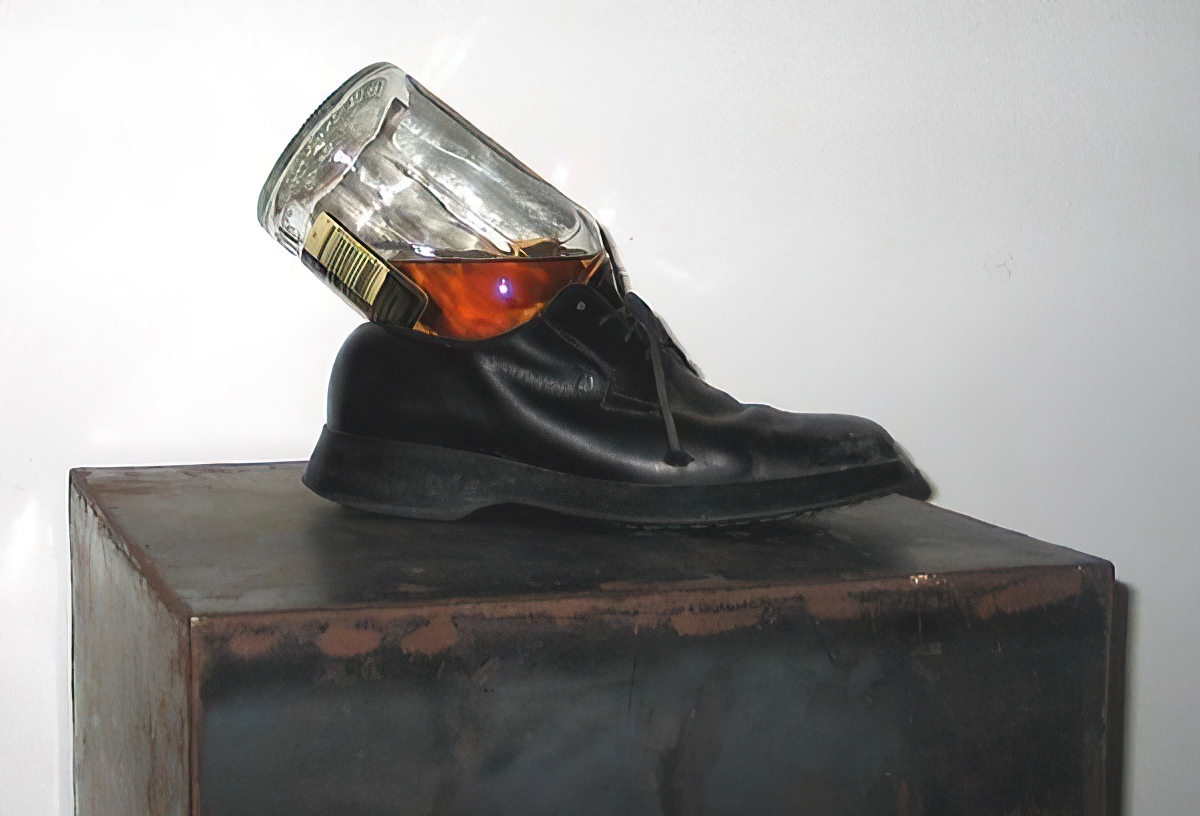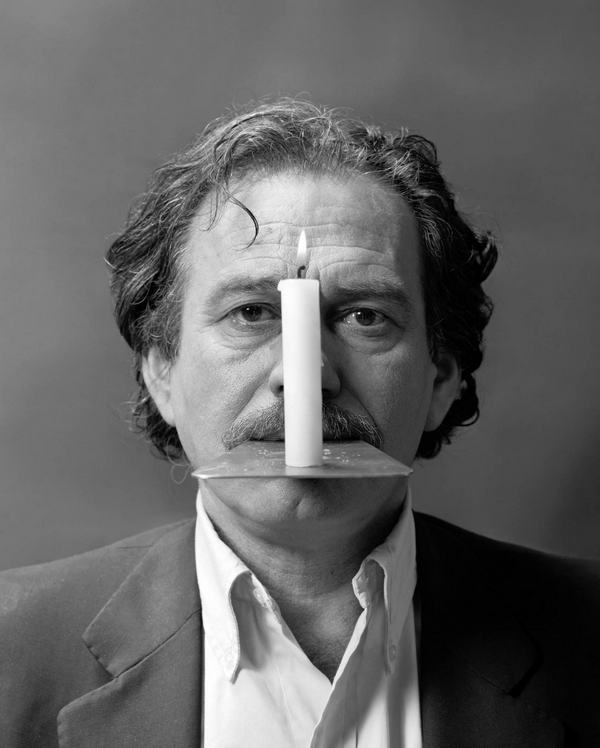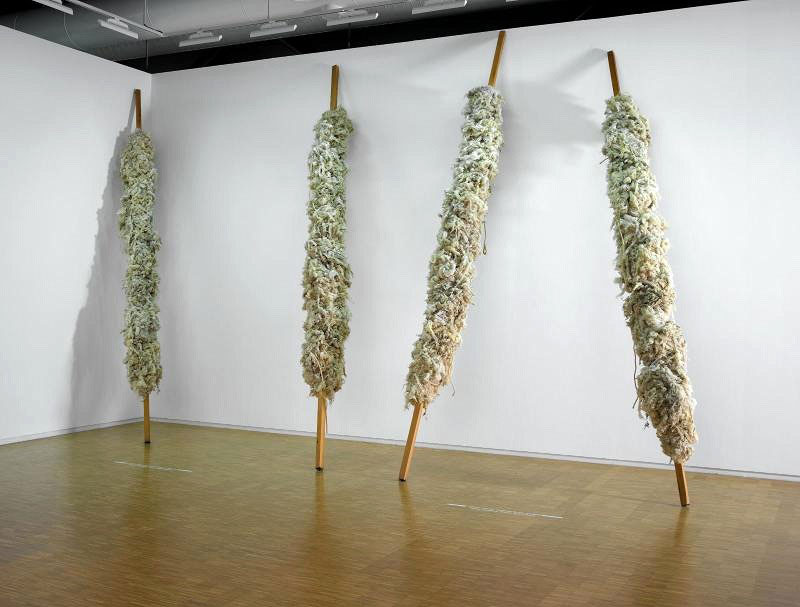TRACES:Jannis Kounellis
 Today is the occasion to bear in mind Jannis Kounellis (23/3/1936-16/2/2017). Kounellis worked initially in Rome, where he was settled and studied, but also in other European cities as in Dusseldorf, where he was Professor at the Academy of Fine Arts, exerting a tremendous influence on his students as personality, teacher and artist. Through this column, as a tribute to artists, living or dead, who have left their mark in Contemporary Art. Through documents or interviews, starting with: moments and memories, we reveal out from the past-unknown sides of big personalities, who left their indelible traces in time and history…
Today is the occasion to bear in mind Jannis Kounellis (23/3/1936-16/2/2017). Kounellis worked initially in Rome, where he was settled and studied, but also in other European cities as in Dusseldorf, where he was Professor at the Academy of Fine Arts, exerting a tremendous influence on his students as personality, teacher and artist. Through this column, as a tribute to artists, living or dead, who have left their mark in Contemporary Art. Through documents or interviews, starting with: moments and memories, we reveal out from the past-unknown sides of big personalities, who left their indelible traces in time and history…
By Efi Michalarou
 Jannis Kounellis was born in Piraeus, Greece. He was rejected from the School of Fine Arts in Athens and in 1956 he moved in Rome and studied at the Accademia di Belle Arti in Rome. Later he became a teacher at the Arts Academy of the city of Düsseldorf. Since the early ‘60s, appeared in contemporary art with a peculiar, very personal visual vocabulary, as we all know, originally projected an and then reached to the creation of artworks composed of images of the most recent industrial-urban past. Kounellis’s painting would gradually become sculptural; by 1963, the artist was using found elements in his paintings. Kounellis began to use live animals in his art during the late 1960s; one of his best-known works included 12 horses installed in the gallery. Kounellis not only questioned the traditionally pristine, sterile environment of the gallery but also transformed art into a breathing entity. His diverse materials from the late 1960s onward included fire, earth, and gold, sometimes alluding to his interest in alchemy. Burlap sacks were introduced, in homage to Alberto Burri, though they were stripped of the painting frame and exhibited as objects in space. Additional materials have included bed frames, doorways, windows, and coat racks. In the ‘70s he played a significant role through the Movement of Arte Povera, which was developed and activated in Italy with the art theorist Germano Celant. The Arte Povera (Poor Art or Proletarian Art) flourished during the period 1967-1972 and took place in cities throughout Italy: Turin, Milan, Rome, Genoa, Venice, Naples and Bologna, was the most significant and influential Avant-Garde movement to emerge in Europe in the ’60s. The work of Arte Povera artists marked a reaction against the modernist Abstract Painting that had dominated European art in the ‘50s, hence much of the group’s work is sculptural. But the group also rejected American Minimalism, in particular what they perceived as its enthusiasm for technology. In this respect, Arte Povera echoes Post-Minimalist tendencies in American art of the ;60s. However, in its opposition to modernism and technology, and its evocations of the past, locality and memory, the movement is distinctly Italian. The first exhibition “Arte Povera e IM Spazio”, which was staged at Galleria La Bertesca in Genoa, in two sections “Arte Povera” which included the work of: Alighiero Boetti, Luciano Fabro, Jannis Kounellis, Giulio Paolini, Pino Pascali and Emilio Prini. And the section “Im Spasio” which included the work of: Umberto Bignardi, Mario Ceroli, Paolo Icaro, Renato Mambor, Eliseo Mattiacci και Cesare Tacchi. The curator was the Art Theoretic Germano Celant to describe the work of a new generation of Italian artists who wanted to destroy the division between life and art. In the ‘80s, Kounellis continued to build his vocabulary of materials, introducing smoke, shelving units, trolleys, blockaded openings, mounds of coffee grounds, and coal, as well as other indicators of commerce, transportation, and economics. These diverse fragments speak to general cultural history, while they simultaneously combine to form a rich and evocative history of meaning within Kounellis’s oeuvre. Kounellis believes that everything that makes is painting: “Ghosts make painting… Without ghosts there would be no painting or painting would be stagnant. Ghosts help painting to move, ghosts give hope and meaning to things… to come at the end, to sit inside the picture”. In the 21st Century, Kounellis has developed an increasingly architectural vocabulary, creating labyrinthine environments that manipulate the exhibition space, the viewer’s experience, and the materials that have articulated the artist’s oeuvre for decades. Jannis Kounellis died in Rome on 16/2/17.
Jannis Kounellis was born in Piraeus, Greece. He was rejected from the School of Fine Arts in Athens and in 1956 he moved in Rome and studied at the Accademia di Belle Arti in Rome. Later he became a teacher at the Arts Academy of the city of Düsseldorf. Since the early ‘60s, appeared in contemporary art with a peculiar, very personal visual vocabulary, as we all know, originally projected an and then reached to the creation of artworks composed of images of the most recent industrial-urban past. Kounellis’s painting would gradually become sculptural; by 1963, the artist was using found elements in his paintings. Kounellis began to use live animals in his art during the late 1960s; one of his best-known works included 12 horses installed in the gallery. Kounellis not only questioned the traditionally pristine, sterile environment of the gallery but also transformed art into a breathing entity. His diverse materials from the late 1960s onward included fire, earth, and gold, sometimes alluding to his interest in alchemy. Burlap sacks were introduced, in homage to Alberto Burri, though they were stripped of the painting frame and exhibited as objects in space. Additional materials have included bed frames, doorways, windows, and coat racks. In the ‘70s he played a significant role through the Movement of Arte Povera, which was developed and activated in Italy with the art theorist Germano Celant. The Arte Povera (Poor Art or Proletarian Art) flourished during the period 1967-1972 and took place in cities throughout Italy: Turin, Milan, Rome, Genoa, Venice, Naples and Bologna, was the most significant and influential Avant-Garde movement to emerge in Europe in the ’60s. The work of Arte Povera artists marked a reaction against the modernist Abstract Painting that had dominated European art in the ‘50s, hence much of the group’s work is sculptural. But the group also rejected American Minimalism, in particular what they perceived as its enthusiasm for technology. In this respect, Arte Povera echoes Post-Minimalist tendencies in American art of the ;60s. However, in its opposition to modernism and technology, and its evocations of the past, locality and memory, the movement is distinctly Italian. The first exhibition “Arte Povera e IM Spazio”, which was staged at Galleria La Bertesca in Genoa, in two sections “Arte Povera” which included the work of: Alighiero Boetti, Luciano Fabro, Jannis Kounellis, Giulio Paolini, Pino Pascali and Emilio Prini. And the section “Im Spasio” which included the work of: Umberto Bignardi, Mario Ceroli, Paolo Icaro, Renato Mambor, Eliseo Mattiacci και Cesare Tacchi. The curator was the Art Theoretic Germano Celant to describe the work of a new generation of Italian artists who wanted to destroy the division between life and art. In the ‘80s, Kounellis continued to build his vocabulary of materials, introducing smoke, shelving units, trolleys, blockaded openings, mounds of coffee grounds, and coal, as well as other indicators of commerce, transportation, and economics. These diverse fragments speak to general cultural history, while they simultaneously combine to form a rich and evocative history of meaning within Kounellis’s oeuvre. Kounellis believes that everything that makes is painting: “Ghosts make painting… Without ghosts there would be no painting or painting would be stagnant. Ghosts help painting to move, ghosts give hope and meaning to things… to come at the end, to sit inside the picture”. In the 21st Century, Kounellis has developed an increasingly architectural vocabulary, creating labyrinthine environments that manipulate the exhibition space, the viewer’s experience, and the materials that have articulated the artist’s oeuvre for decades. Jannis Kounellis died in Rome on 16/2/17.











